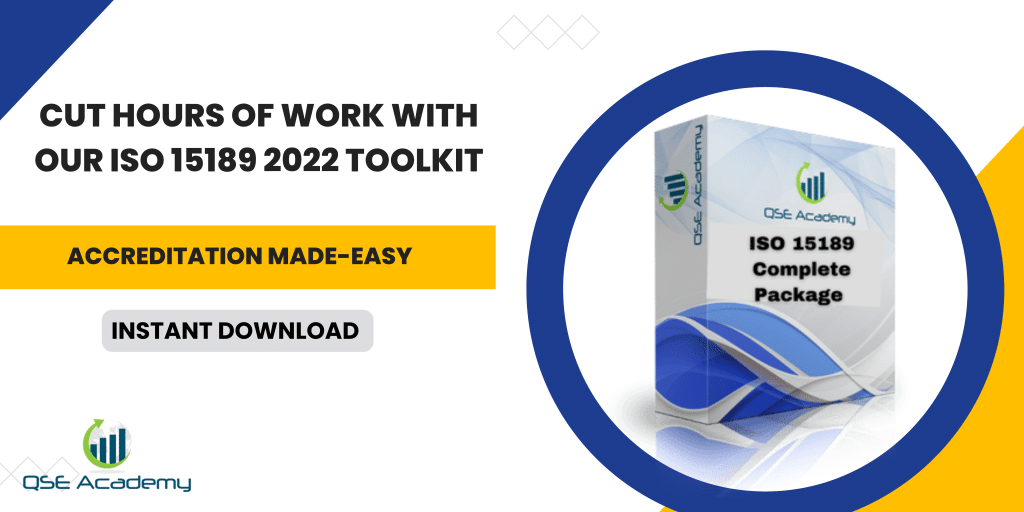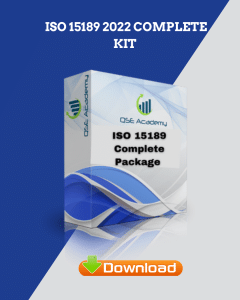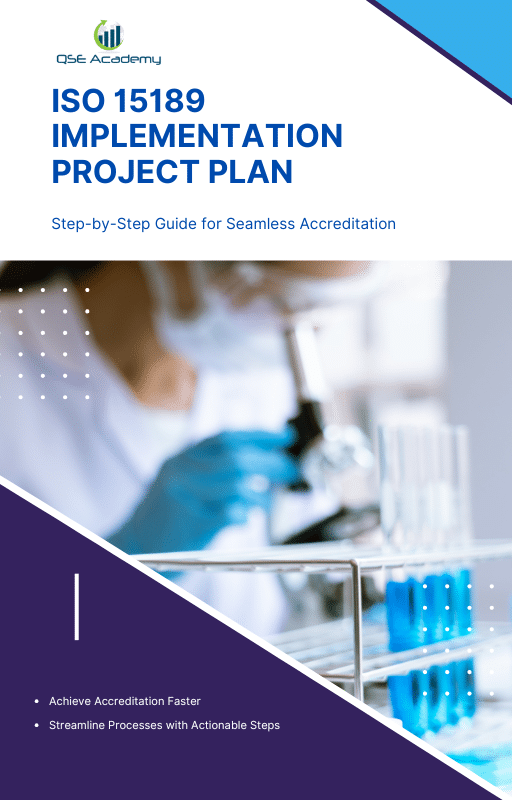ISO 15189:2022 Corrective Actions for Audit Findings
Last Updated on October 22, 2025 by Hafsa J.
Why Corrective Action Defines Your Laboratory’s Credibility
Here’s what I’ve noticed after helping dozens of medical laboratories prepare for ISO 15189 accreditation:
most findings aren’t damaging — but how you handle them can be.
A non-conformity isn’t the problem; the problem is when a lab rushes to fix it without understanding why it happened.
That’s how the same issue reappears during the next audit, only this time with an assessor’s raised eyebrow and a note that says “repeat finding.”
Corrective action is where your lab proves it’s not just compliant — it’s capable of learning.
It shows that you don’t patch symptoms; you repair systems.
That’s the real test of a mature quality management system.
I’ve seen two kinds of labs after an audit:
-
The first one treats findings like embarrassment and focuses on damage control.
-
The second sees them as opportunities to strengthen their processes — and those are the labs that never panic during reassessments.
This guide breaks down the ISO 15189:2022 corrective-action process step by step:
how to identify root causes, implement solutions that stick, and verify that the issue won’t return.
You’ll also see examples, pro tips, and the exact structure assessors expect when reviewing your CAPA documentation.
Because once you learn to manage corrective actions the right way, audit findings stop feeling like failures — and start becoming proof of your lab’s reliability.
What ISO 15189:2022 Says About Corrective Actions
Before we dive into the “how,” it’s worth understanding what ISO 15189 actually expects when it comes to corrective actions.
Too many labs jump into problem-solving mode without realizing what the standard truly wants to see — and that’s where mistakes start.
Clause 8.9 – Corrective Action Explained
Clause 8.9 of ISO 15189:2022 makes it clear:
When a non-conformity occurs — whether it’s found during an audit, a complaint, or day-to-day operations — the lab must take action to eliminate the cause and prevent recurrence.
Notice that wording: eliminate the cause, not close the report.
The intent isn’t just to correct the issue in front of you — it’s to make sure it doesn’t happen again anywhere else in your system.
In short:
-
A correction fixes the immediate problem.
-
A corrective action prevents the problem from coming back.
That’s a big difference, and assessors are trained to spot whether your CAPAs achieve both.
The Purpose Behind the Requirement
ISO 15189 wants to see evidence that your system can detect, analyze, and learn from its own weaknesses.
Corrective actions demonstrate that your lab:
-
Identifies the real reason behind a finding (not just the surface issue)
-
Implements lasting solutions
-
Verifies that those solutions actually worked
When done properly, CAPAs create confidence — not only for assessors but also for your clients, patients, and team.
How It Fits into the Bigger Picture
Corrective actions don’t exist in isolation.
They’re part of a larger improvement cycle that includes:
-
Detection – spotting the issue (from audits, complaints, or QC deviations)
-
Correction – immediate fix
-
Root-cause analysis – why it happened
-
Corrective action – long-term solution
-
Verification – proving the issue won’t return
That cycle is what keeps your quality system alive and self-improving — exactly what ISO 15189 is built around.
Pro Tip:
Don’t wait for an external audit to trigger corrective action.
Internal audits, daily checks, and even staff feedback can reveal areas to improve.
The earlier you act, the fewer findings you’ll face later.
Step-by-Step Corrective-Action Workflow for Audit Findings
Every strong ISO 15189 system handles corrective actions the same way — not through guesswork, but through a clear, traceable process.
When assessors review your CAPA (Corrective and Preventive Action) system, they’re checking for one thing above all: control.
They want to see that your lab doesn’t just react — it responds systematically.
Here’s the proven workflow I teach laboratories to follow after any audit finding.
Step 1: Record the Non-Conformity
Write down what happened exactly as observed.
Include the date, department, clause reference, and evidence (documents, logs, or interviews).
Keep it factual — no opinions or blame.
Example:
“QC log for analyzer XYZ missing entries from 12 – 14 May 2025.”
Pro Tip:
Create a single CAPA register for all findings — internal and external.
Assessors love centralized control.
Step 2: Contain the Issue
Your first responsibility is to stop the impact from spreading.
If the problem could affect results or patient safety, isolate it immediately.
Example:
Suspend testing on the affected analyzer, label it “Under Investigation,” and switch to a verified backup.
Containment isn’t the same as correction — it’s damage control while you investigate.
Step 3: Analyze the Root Cause
Now comes the heart of CAPA.
Ask why the problem occurred — and don’t stop at “staff error.”
Use structured tools like the 5 Whys or a Fishbone diagram to dig deeper into system causes:
-
unclear SOPs
-
inadequate training
-
missing verification steps
-
weak supervision
When your root cause points to a process, not a person, you’re on the right track.
Step 4: Develop the Corrective-Action Plan
List the actions you’ll take to remove the root cause.
Each action should have:
-
a responsible person
-
a deadline
-
expected results
Example:
Update the QC procedure to include sign-off by section supervisor.
Train all staff by 30 June 2025.
Common Mistake:
Skipping this planning stage and jumping straight to fixes — that’s how temporary patches turn into repeat findings.
Step 5: Implement the Action
Carry out the plan.
This could mean revising an SOP, retraining staff, re-calibrating equipment, or updating documentation.
Keep proof — updated forms, attendance sheets, calibration certificates — everything should be traceable.
Pro Tip:
Attach implementation evidence directly to your CAPA record.
When assessors ask, “Show me proof,” you’ll have it ready in seconds.
Step 6: Verify Effectiveness
After implementation, check that the problem truly disappeared.
How? Through follow-up audits, data monitoring, or trend analysis.
If the issue returns, the root cause wasn’t fully resolved — reopen the CAPA and go deeper.
Example:
Three months later, no missed QC logs found. Issue verified as resolved.
Step 7: Document and Close
Once verification is complete, record the closure date and approver’s signature.
Keep all supporting evidence linked — from initial finding to final verification.
That complete trail is what demonstrates compliance.
Pro Tip:
A well-maintained CAPA tracker is more than paperwork — it’s your laboratory’s improvement story in one place.
Assessors often comment positively when they see a CAPA system that tells a clear, chronological story.
Root-Cause Analysis Tools That Work in Real Labs
Here’s the truth — most CAPAs fail not because of weak follow-up, but because the root cause was never really found.
I’ve seen labs fix the same issue three times in a year, and it’s almost always because they stopped their investigation too soon.
If you only fix what’s visible, you’ll keep fighting the same fire.
Root-cause analysis (RCA) is about finding where the spark came from — and designing your process so it doesn’t reignite.
Let’s break down the tools that actually work inside medical laboratories.
1. The 5 Whys Method (Simple, Fast, Reliable)
The 5 Whys works perfectly for straightforward, single-issue problems.
You start with the finding and keep asking why until you uncover the underlying system flaw.
Example:
Problem: Calibration log for hematology analyzer is incomplete.
Why? → The technician forgot to record it.
Why? → The form wasn’t near the instrument.
Why? → The checklist binder was moved during renovation.
Why? → No one was assigned to reposition documentation.
Root cause: Missing ownership and process control for document relocation.
Pro Tip:
Stop asking “why” once your answer points to a process, not a person.
That’s where preventive action becomes possible.
2. The Fishbone (Ishikawa) Diagram
When findings involve multiple contributing factors — like recurring QC failures or data-entry errors — the Fishbone diagram helps you map them visually.
You group causes under six categories: Man, Machine, Method, Material, Measurement, and Environment.
Example (QC errors):
-
Man: Inadequate staff training
-
Machine: Analyzer not calibrated
-
Method: Unclear SOP
-
Material: Expired controls
-
Measurement: No trending or review
-
Environment: Temperature fluctuations
This structure helps teams see patterns — and it’s excellent for RCA meetings.
Pro Tip:
Use this method when more than one section is involved in the finding. It helps eliminate finger-pointing and promotes collaboration.
3. Pareto Analysis (The 80/20 Rule)
When you’ve got multiple findings from one audit, it’s easy to drown in data.
Pareto Analysis helps you focus where it matters most — the 20% of causes that create 80% of your problems.
Here’s how:
-
List all findings from internal and external audits.
-
Categorize them (e.g., documentation, equipment, training).
-
Count the frequency of each category.
-
Fix the most common or highest-risk category first.
Example:
If 12 out of 20 findings are related to documentation, start there — solving that alone eliminates the majority of repeat NCs.
4. Brainstorming + Flowchart Review
Sometimes the simplest method works best: gather your team and walk through the process together.
Recreate what happened — step by step — and identify where it broke down.
Example:
During a data-entry error review, the team realized that results were being manually transferred twice due to a LIS setup gap — something no one noticed until the audit.
Pro Tip:
Document your RCA discussions. Even meeting notes count as evidence of analysis and team involvement.
5. Verification Checklist
Once the root cause is identified, make sure it checks three boxes:
-
It’s based on evidence, not assumption.
-
It’s within your lab’s control.
-
It addresses system design, not individual behavior.
If it doesn’t meet those, you haven’t found the real cause yet.
A solid root-cause analysis doesn’t just fix one problem — it builds resilience into your system.
When assessors see that your RCA process is structured, collaborative, and data-driven, it tells them your lab doesn’t just comply — it thinks.
Writing an Effective Corrective-Action Report (With Example)
Here’s what most labs get wrong about CAPA reports — they treat them like forms to fill out, not stories to tell.
But every good corrective-action report should tell the story of what went wrong, what you discovered, and how you made sure it won’t happen again.
Assessors don’t just read your report; they read your reasoning.
They want to see logic, traceability, and evidence — from the finding all the way to verification.
Let’s walk through what an effective corrective-action report looks like.
1. Keep It Structured and Clear
Every CAPA record should include these sections:
| Field | What to Include |
|---|---|
| Non-Conformity Description | What was observed — short, factual, and specific. |
| Clause Reference | The exact ISO 15189:2022 clause that applies. |
| Immediate Correction | What was done right away to stop the issue. |
| Root Cause Identified | The verified reason behind the problem. |
| Corrective-Action Plan | Actions to remove the cause permanently, with deadlines and responsibilities. |
| Verification of Effectiveness | Proof that the action worked (follow-up audit, trend review, etc.). |
| Responsible Person / Date | Who handled it and when it was verified closed. |
That’s what auditors expect — a simple, logical trail from problem to prevention.
2. Be Factual, Not Emotional
Avoid defensive or vague language like “staff failed to comply.”
Stick to facts and system insights instead:
“Procedure QP-05 did not include a step for QC review before result release.”
This phrasing shows objectivity and focuses on process, not blame.
Pro Tip:
Every sentence in your CAPA should answer one question: How does this prevent recurrence?
3. Provide Objective Evidence
Attach or reference documents that prove your action happened:
-
Updated SOPs and revision history
-
Training attendance sheets
-
New checklists or forms
-
Equipment calibration certificates
-
Follow-up internal audit reports
Evidence isn’t optional — it’s your credibility.
Example:
CAPA-2025-07
NC: Outdated SOP found in hematology section.
Root Cause: Master list not updated after procedure revision.
Correction: Removed obsolete copy; distributed latest version.
Corrective Action: Implemented digital document-control tracker with auto notifications.
Verification: No outdated SOPs found in next internal audit (August 2025).
Closed by: Quality Manager – 15 September 2025.
That’s a textbook-ready CAPA — short, specific, and fully traceable.
4. Watch for Common Pitfalls
-
Writing vague root causes (“human error,” “staff oversight”)
-
Skipping verification steps
-
Closing CAPA too early without proof
-
Forgetting to document team involvement
Pro Tip:
Before closing a CAPA, ask:
“If a new assessor reads this next year, will they clearly understand what we did and why it worked?”
If not, it’s not ready to close.
5. Keep It Consistent
Use one standard CAPA format across all departments.
Consistency builds confidence and makes cross-referencing easy during audits.
Assessors notice when your records “speak the same language.”
A well-written corrective-action report isn’t just compliance — it’s storytelling with evidence.
It shows that your lab doesn’t just fix issues; it learns from them, documents the lesson, and proves the improvement.
Verifying Effectiveness and Closing the Loop
Here’s where most CAPA systems fall short — the lab fixes the problem, files the paperwork, and moves on.
But in ISO 15189, the job isn’t done until you prove the solution actually worked.
That proof — called verification of effectiveness — is what assessors look for when they decide whether your corrective actions are credible.
Correction vs. Corrective Action
It’s easy to confuse the two, so let’s clear it up:
-
Correction = The quick fix. You restore immediate control.
Example: You update the missing QC log. -
Corrective Action = The system fix. You ensure the issue never happens again.
Example: You redesign the QC recording process and train staff on the new workflow.
Both are important — but only one demonstrates lasting improvement.
Pro Tip:
Assessors often check whether your lab learned from the incident, not just whether it reacted to it.
If your CAPA doesn’t show that learning curve, it’s not complete.
How to Verify Effectiveness
Verification is simply proof that your action worked and stayed effective over time.
Here are practical ways to do it:
-
Follow-up Internal Audit
– Recheck the same process after implementation.
– Confirm that the issue hasn’t reappeared.
– Document this as evidence in your CAPA log. -
Trend or Data Analysis
– Compare new results with pre-CAPA performance.
– Example: Track QC pass rates, error counts, or turnaround times.
– Look for sustained improvement over at least one audit cycle. -
Staff Feedback or Competency Review
– Interview or observe staff performing the corrected task.
– Verify they understand and consistently follow the updated procedure. -
Record Review
– Check logs, forms, or reports to ensure new controls are actually being used.
Example:
Finding: Missed reagent inventory checks.
Corrective Action: Introduced a weekly digital checklist.
Verification: Follow-up audit after 3 months found 100% completion rate — sustained for two cycles.
When to Reopen a CAPA
If your verification shows the issue reappearing — or if another section reports the same weakness — reopen the CAPA immediately.
That’s not a failure; it’s maturity.
It shows assessors your system is transparent and willing to correct itself.
Common Mistake:
Marking CAPAs “closed” just to clear the list.
Premature closure is one of the fastest ways to earn a repeat finding in your next audit.
Document Everything
Record how you verified effectiveness, who performed it, and what evidence you used.
Attach trend reports, audit checklists, or summary notes directly to your CAPA file.
Pro Tip:
Add a “Verification” column in your CAPA tracker.
Include fields for Date Verified, Evidence Reference, and Verified By.
It keeps your entire follow-up trail neat, transparent, and audit-ready.
Closing the Loop
Once the corrective action is verified as effective, close it formally — with signatures, closure dates, and clear references to supporting documents.
Then, during your next management review, summarize all closed CAPAs and what they achieved.
That’s your proof of continual improvement under ISO 15189.
A properly verified CAPA doesn’t just fix one issue — it strengthens your entire system.
And when assessors see that level of closure and follow-up, they immediately recognize a lab that’s in control, disciplined, and trustworthy.
Integrating CAPA into Your Management System
If your corrective actions live in isolation, they’ll fade into the background — a pile of forms no one revisits until the next audit.
But when CAPA becomes part of your management system rhythm, that’s when it starts driving real improvement.
ISO 15189 doesn’t just want you to fix problems; it wants you to build a culture that prevents them.
Let’s talk about how to make that happen.
1. Connect CAPA to Your Internal Audits
Your internal audits shouldn’t just identify findings — they should also feed your CAPA pipeline.
Each non-conformity discovered internally deserves the same structured attention you’d give to an external audit finding.
Example:
Your internal audit notes inconsistent sample labeling in microbiology.
You log it, analyze the root cause, and discover the issue stems from unclear LIS entry steps.
You fix it before it becomes an external audit finding.
That’s proactive control — the kind of foresight assessors immediately recognize.
Pro Tip:
At the start of every quarter, review open CAPAs from previous audits and make them part of your new internal audit checklist.
It shows continuous follow-up and system awareness.
2. Integrate CAPA into Risk Management
CAPAs and risk management go hand in hand.
Every major finding should feed into your risk register — not as punishment, but as prevention.
Here’s how to do it:
-
Link each CAPA to a related risk (e.g., “Instrument calibration gap – risk of invalid patient results”).
-
Assign likelihood and impact scores.
-
After corrective action, reassess and update the risk score to reflect improvement.
Pro Tip:
Show this linkage during your next management review — it tells assessors your system isn’t just reactive, it’s strategic.
3. Use CAPA Data in Management Review
Your management review should never be a boring checklist meeting.
It’s where the lab leadership sees how the quality system performs — and CAPA data is the best performance indicator you have.
Include these in your review:
-
Number of CAPAs raised and closed in the period
-
Average closure time
-
Repeated findings or trends
-
Improvements achieved as a result
Example:
“After addressing repeated QC review delays, we implemented auto-alerts in the LIS.
This reduced missed QC sign-offs from 8 per month to zero.”
That’s how you prove continual improvement with hard evidence.
Too often, CAPAs stay within one section — microbiology fixes microbiology issues, hematology fixes hematology issues.
But the best labs share lessons across departments.
Example:
A CAPA from chemistry about “outdated SOP copies” triggered a full lab-wide document control review.
Result? Zero findings in the next assessment.
Pro Tip:
At least once a quarter, hold a short “QMS improvement huddle” where section heads share what they learned from CAPAs.
It’s quick, it’s collaborative, and it keeps quality alive.
5. Build a Continuous Feedback Loop
Once you start connecting CAPA → Risk → Audit → Management Review, your quality system becomes self-correcting.
You’ll notice fewer repeat findings, faster issue resolution, and stronger staff ownership.
That’s the point of ISO 15189 — not just compliance, but a system that thinks, adapts, and improves.
When CAPA becomes part of your lab’s daily language — not just a form but a mindset — you don’t fear audits anymore.
You welcome them, because every audit becomes another step in your lab’s growth story.
FAQs – Corrective Actions Under ISO 15189:2022
Over time, I’ve noticed that every lab manager and quality officer eventually asks the same set of questions about corrective actions.
These questions usually come up right after an audit — when the team is racing to close findings and make sure everything is documented properly.
Let’s clear up the most common ones, based on real accreditation experience.
Q1. How soon should we take corrective action after receiving audit findings?
Ideally, immediately — or at least within a week.
Even if your formal CAPA process takes time, you should start with containment actions right away to control any ongoing impact.
Most accreditation bodies (like CAP, SANAS, or TAF) expect you to:
-
Submit your corrective-action plan within 30 days, and
-
Provide evidence of effectiveness within 60–90 days, depending on the issue.
Pro Tip:
Don’t wait until the deadline. Early action signals maturity and control — qualities assessors always note.
Q2. Who should be responsible for verifying CAPA effectiveness?
Verification should never be done by the same person who implemented the action.
It needs an independent eye — typically the Quality Manager, Internal Auditor, or Section Head not directly involved in the finding.
Why?
Because objectivity ensures your verification isn’t biased toward “we fixed it.”
Assessors will check whether the verification step is truly independent and evidence-based.
Q3. What if we find new issues while implementing a corrective action?
That’s actually a good thing.
It means your system is working — it’s detecting hidden weaknesses.
If the new issue is unrelated to the original finding, log it as a separate CAPA.
If it’s connected, expand your existing CAPA to include the new scope and actions.
Just make sure to document everything clearly — transparency builds trust.
Pro Tip:
Never hide new issues discovered mid-CAPA.
Assessors appreciate honesty far more than “perfect” reports.
Q4. Can we reopen a closed CAPA?
Absolutely — and sometimes you should.
If the same issue reappears or if verification data later shows the action wasn’t effective, reopen the CAPA and update it with new analysis and steps.
This doesn’t count against you.
In fact, reopening a CAPA demonstrates a mature and self-correcting system — exactly what ISO 15189 encourages.
Q5. How detailed should our root-cause documentation be?
Detailed enough that someone outside your lab could read it and understand why the issue happened and how you prevented it from recurring.
A good rule of thumb:
If your root-cause statement sounds like “human error,” it’s not detailed enough.
Instead, describe the process weakness that led to the mistake.
Example:
Poorly designed QC checklist led to incomplete temperature recording, not “technician forgot.”
When you treat CAPA as a structured, evidence-based improvement process — not a scramble to please assessors — you build credibility, consistency, and confidence.
That’s what turns ISO 15189 from paperwork into a living quality system.
Corrective Actions Are Proof of Control
Here’s the bottom line: in ISO 15189, corrective actions aren’t just about fixing what went wrong — they’re about proving that your lab is in control.
Every audit finding, every investigation, every follow-up tells a story.
And when that story ends with evidence of prevention, not just correction, it shows your system is truly mature.
What Great Labs Do Differently
The best laboratories I’ve worked with don’t wait for auditors to push them.
They treat every finding — internal or external — as free insight into how their processes perform under real-world pressure.
They document clearly, analyze deeply, and verify thoroughly.
And because of that, their audit reports get smaller and cleaner every year.
Here’s the mindset that sets them apart:
-
Transparency over perfection – they admit weaknesses early.
-
Consistency over speed – they close CAPAs when they’re verified, not when they’re convenient.
-
Learning over blame – they use findings to train, not to shame.
That’s what makes ISO 15189 work in practice — not the forms, but the culture behind them.
Key Takeaways
-
Every non-conformity deserves analysis, not assumptions.
-
A strong CAPA system follows a structured, documented flow — from finding to verification.
-
Verification isn’t optional; it’s the proof of real control.
-
CAPA data belongs in your management review — that’s where learning becomes strategy.
When assessors see that your lab doesn’t just fix issues but learns from them, it builds long-term confidence in your accreditation.
Your Next Step
If you want to strengthen your CAPA process and simplify follow-up tracking, use tools built by professionals who’ve already done this work hundreds of times.
[Download QSE Academy’s ISO 15189 Corrective Action & CAPA Tracker Template] (insert CTA link)
It’s designed to help laboratories record findings, track progress, verify effectiveness, and stay audit-ready — without wasting hours on formatting.
Whether it’s ISO 9001, ISO 22000, or the cosmetics-focused ISO 22716, I’ve spent my career I’m not here to call myself an expert—I prefer “enthusiast” because I truly love what I do. When I’m not writing about standards, you’ll probably find me playing Piano 🎹, connecting with people, or diving into my next big project💫. I’m an engineer specialized in the food and agricultural industry
make ISO standards less intimidating and more approachable for everyone.
turning complex jargon into clear, actionable steps that businesses can actually use.
There’s something incredibly rewarding about helping people navigate food safety and quality management systems
in a way that feels simple, practical, and even enjoyable.
I have a Master’s in QHSE management and over 12 years of experience as a Quality Manager
I’ve helped more than 15 companies implement ISO 9001, ISO 22000, ISO 22716, GMP, and other standards
My clients include food producers, cosmetics manufacturers, laboratories, and service companies
I believe quality systems should be simple, useful, and efficient.













